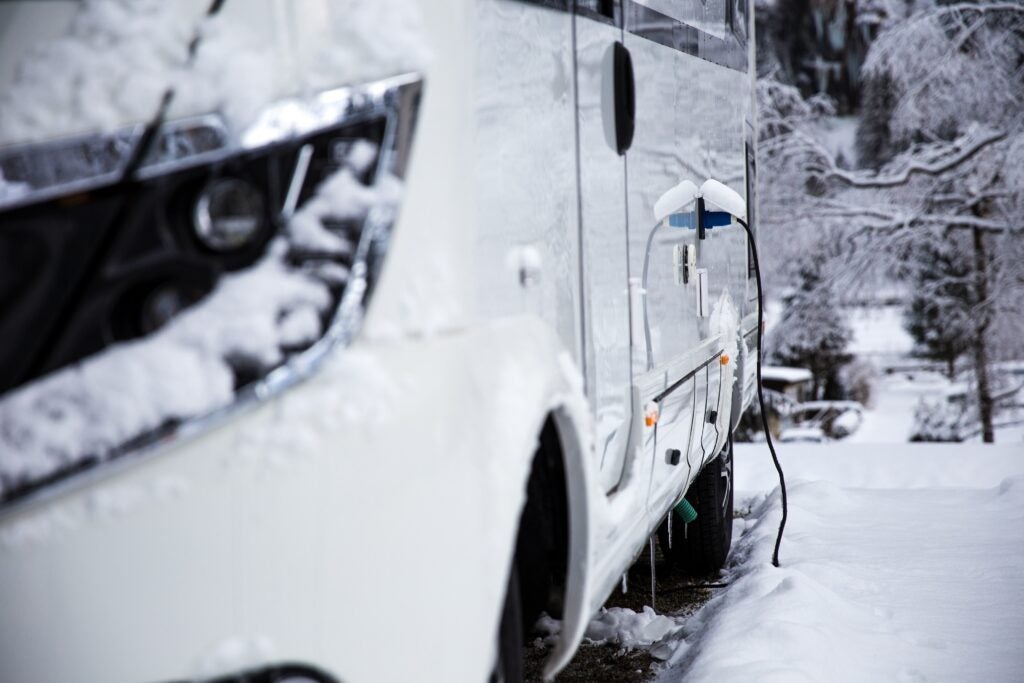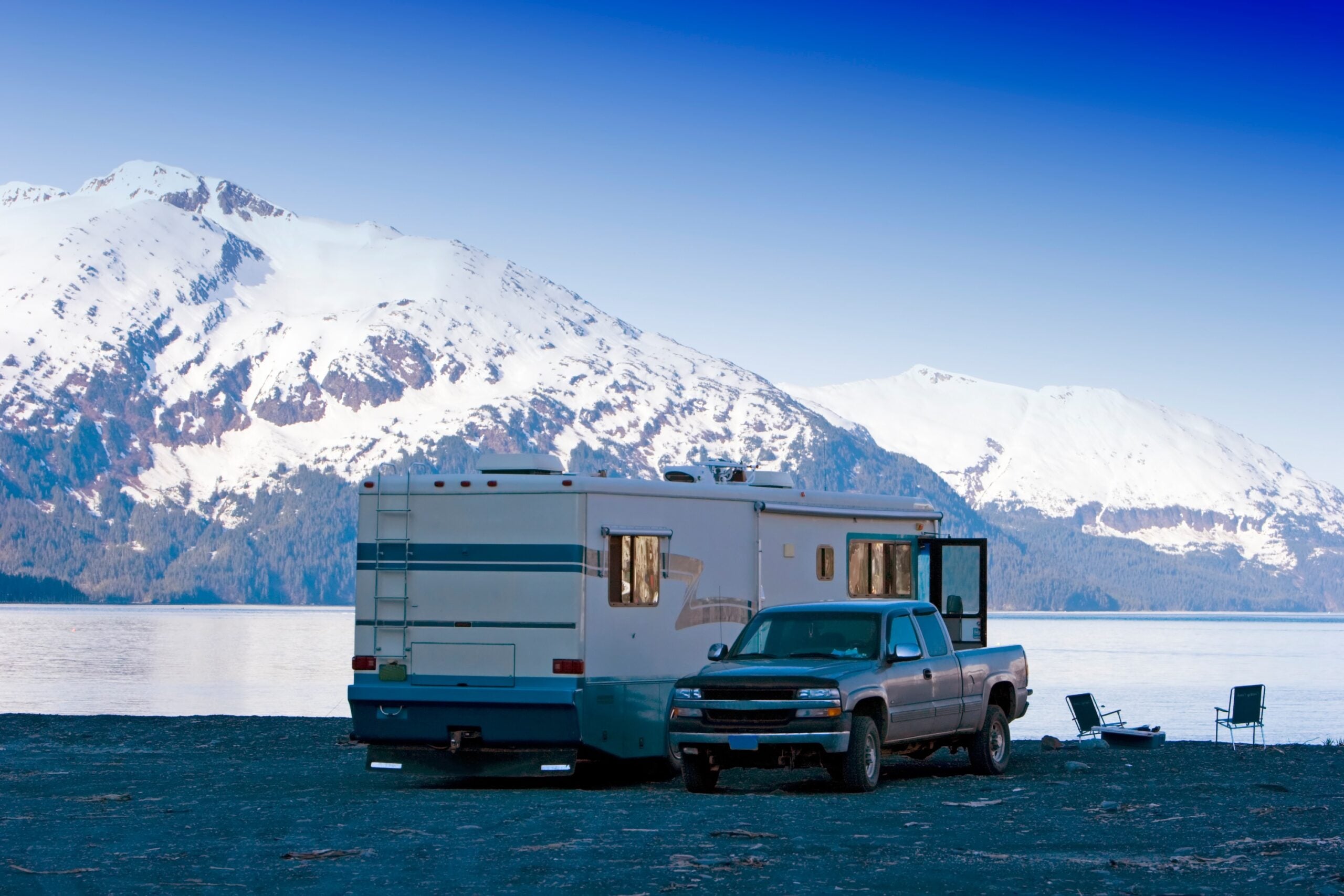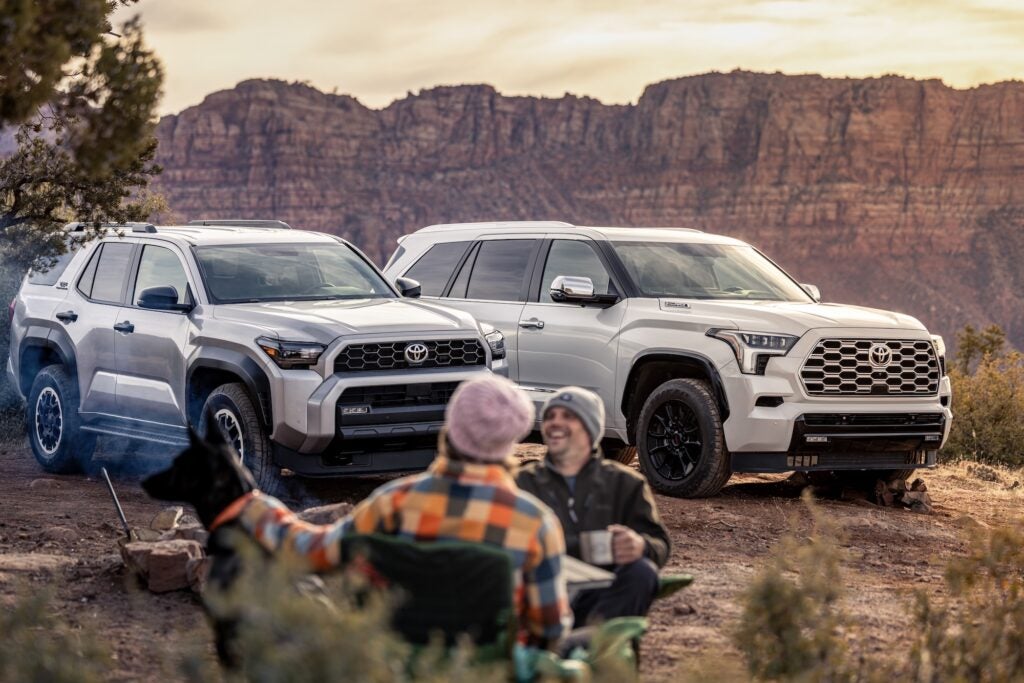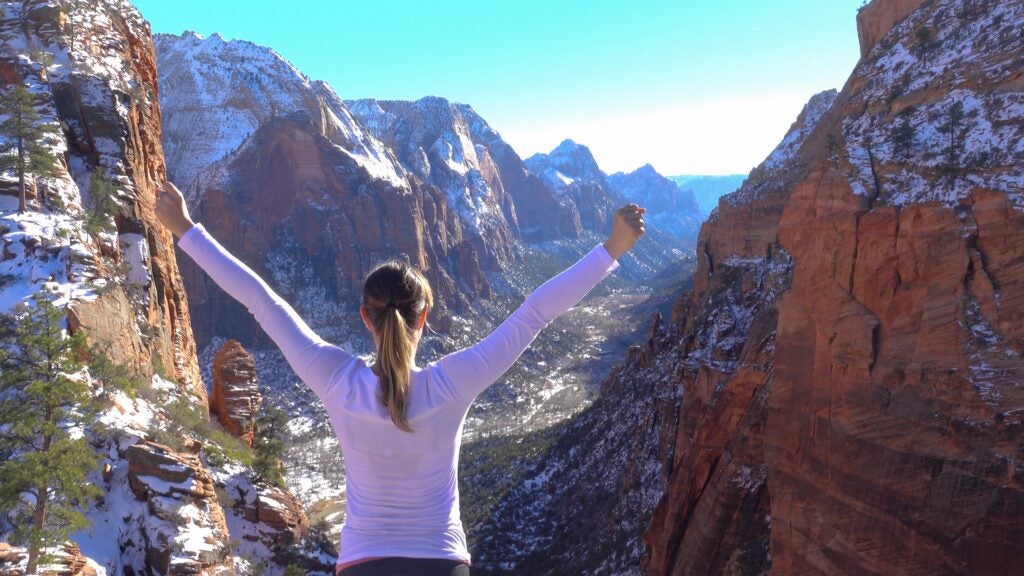During our first winter with our travel trailer, we headed towards Goblin Valley State Park in Utah for a wintry adventure. We owned a winter-equipped trailer by Outdoors RV, so we felt relatively confident. But, we hadn’t accounted for natural elements, like the fact that the sun was sitting lower in the sky which dramatically affected our solar-powered rig. We awoke one morning around 3am when the heat abruptly cut out. After checking the propane — we still had plenty — we realized our rookie error. Our solar panels were absorbing less energy due to the angle of the sun, yet our heater was constantly running thanks to the frigid temperatures. End result: we drained our batteries.
Fortunately, this wasn’t a crisis since we had plenty of warm clothes. Once the sun rose, we towed the trailer into a patch of direct sunlight — very carefully since we didn’t have the power to pull in our slide-out — and recharged the panels. But, we learned our lesson.
Cold-weather camping in an RV can be a joy since there are often fewer people and stunning scenery. But, there are factors to take into consideration. If you’re headed out for your first winter adventure this season, here are a few winter RV camping tips to ensure you have a wonderful trip.
Book in Advance
This may feel obvious, but it’s important to note. Depending on where you’re visiting, a lot of campgrounds are closed in the winter so be sure to do your research in advance. And, others may be available on a first come, first served basis. Be sure you have a Plan B or even Plan C in case your first choices don’t work out.
Bonus: If you do find an open campground, double check to make sure the water is turned on in the winter. In some places, the campgrounds are open but the water is turned off to prevent freezing — and it’s really good to know this in advance!
Properly Insulate Your RV
Insulating your RV means that you’ll protect both yourself and your pricey investment from the frigid temperatures. You want to make sure you have decent insulation in the walls and around the base area to ensure that the interior stays cozy and water tanks in the underbelly do not freeze. The latter is often called “skirting” since it looks like a skirt wrapped around the base of the RV.
If you’re worried about truly cold temperatures, keep in mind that cold air seeps in through all of those beautiful windows that you enjoy in the summer. Insulate your windows with heavy blinds or even cheap foam squares to minimize a draft.

Protect Your Pipes
One of the creature comforts that comes with RV life is having access to running water during all seasons — but that can be tricky when you’re managing frozen pipes. If you’re tapped into a city water connection, use a heated hose to prevent freezing. You can also allow a slow faucet drip overnight because moving water freezes less quickly than stagnant water. (However, if you’re boondocking, take note: you don’t want to drain your tank AND fill your gray water overnight!)
Check Your Tires
Icy roads and bad tires are a recipe for disaster. Before you head out, check your tires to make sure they aren’t bald and that you have a set of chains packed. Some RV rental companies won’t allow the use of chains — they can cause damage — but if it’s in your own RV, they can come in handy if roads turn dangerous.
Pack Extra Clothes
It’s dumb to be cold. Just because you’re living the luxurious life in your portable home doesn’t mean you shouldn’t pack for the worst-case scenario. We always bring enough insulating and cold-weather apparel to ensure we’ll be toasty warm if everything shuts down and we end up sleeping outside. A puffy, a beanie, warm mittens, and an extra sleeping bag can go a long way in an emergency.
The Dyrt is the only camping app with all of the public and private campgrounds, RV parks, and free camping locations in the United States. Download now for iOS and Android.Popular Articles:
Articles on The Dyrt Magazine may contain links to affiliate websites. The Dyrt receives an affiliate commission for any purchases made by using such links at no additional cost to you the consumer.



